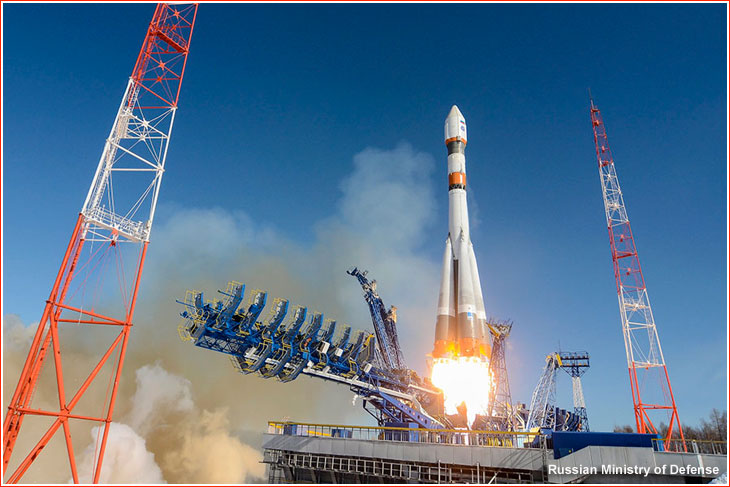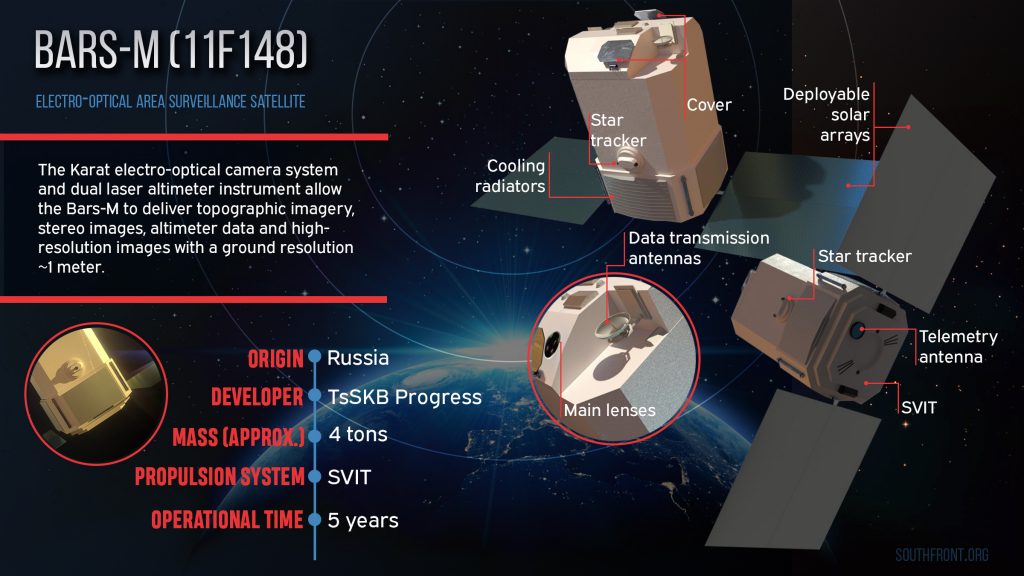The third Russian Bars-M satellite is expected to be ready soon and be delivered to the Ministry of Defense and be launched in space.
This was reported back in February 2020, by General Aleksei Krivoruchko, Deputy Minister of Defense.
“The new Bars-M observation and mapping satellite, which is being developed by the Progress Rocket and Space Center, is practically ready for the transfer to the troops,” Krivoruchko said in an interview with Radioelectronic Technologies magazine.
In 2011, a document summarizing remote-sensing missions developed by the Russian space agency, Roskosmos, listed the Bars-M satellite scheduled for launch at the end of 2014. Two more Bars-Ms were expected to follow at the end of 2016 and the middle of 2018.
The four-ton satellite became the first spacecraft developed at TsSKB Progress almost entirely with computer-assisted design.
Bars-M also became the company’s first satellite featuring an unpressurized body.
As a result, it promised to extend the operational life span of the satellite, since in the past, the main limiting factor for satellites had been the loss of pressure and subsequent failure of internal systems under harsh temperature and vacuum conditions.
The unpressurized design could also reduce the overall mass of the spacecraft.
It has three main components:
- Payload Module, MTsA;
- Service Module, MSS;
- Propulsion System, SVIT.
The SVIT propulsion system would be installed inside the MSS service module and could be installed inside the MSS during the assembly via its bottom bulkhead.
The SVIT features four main orbit-correction engines, KTD, developed at Isaev KB Khimmash in Korolev and 12 small attitude-control thrusters, provided by NII Khimmash in Nizhnyaya Salda.
First developed for the Bars-M project, the MSS module later became the basis for the Obzor-R radar-carrying satellite.
The Bars-M’s main instrument inside the MTsA payload module consists of a dual telescope called OEK Karat, where OEK stands for the Optical Electronic Complex. The triple-lens instrument was developed at the LOMO company in St Petersburg, which also built the main imaging system for the Persona reconnaissance satellite.
The satellites were delayed several times.
In 2014, the first satellite was finally assembled and underwent final testing, followed by its shipment by rail from Samara to Plesetsk at the end of January 2015. However, it was actually launched on February 27th, 2015.
It’s launch vehicle was a Soyuz-2-1a rocket.
The second satellite was launched on March 24th, 2016. Once again with a Soyuz-2-1a rocket.
The third Bars-M satellite should’ve been launched back in 2018, however, due to the delays it is unclear when it will be launched as of April 2020, only that it should be delivered to the Russian Ministry of Defense “soon.”
Open Russian records on federal procurements indicate that six such satellites had been ordered.
The Bars-M is slated to replace the Kometa satellites which were in operation since the 1980s.
Imagery from Kometa was used for military applications as well as a variety of topographic purposes such as updating of existing maps, the generation of large-scale maps, digital maps, forestry cadastre, land management, resource management and a number of other applications.
After the fall of the Soviet Union, Kometa imagery was available on the commercial market starting in the early 1990s.
These were the highest resolution images that were available on the commercial market with resolutions up to two meters. One-meter resolution imagery started distribution in 2001.
Back when the initial plans for the Bars were initiated in the 1990s, the plan was for it to be a topographic electro-optical imaging system consisting of a wide-angle and high-resolution camera and a set of laser altimeters.
The specifications of the Bars-M satellite are the following:
- Launch vehicle: Soyuz-2-1a rocket
- Launch site: Plesetsk cosmodrome
- Liftoff mass: 4,000 kg
- Size: 4 x 2.3 x 2.3 meters
- Operational life span: 5 years
- Imaging system designation: OEK Karat
- Imaging system resolution: 1.1-1.35 meters
- Number of spectral bands: 7
- Imaging area revisit frequency: Once every three days
- Coverage area: 1,340/60 kilometers
MORE ON THE TOPIC:







